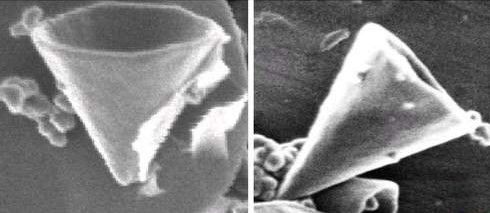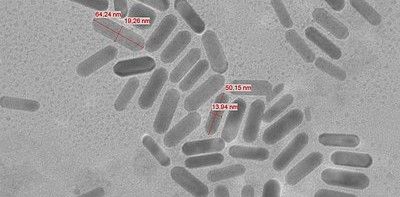It is well-known in investing circles that nanotechnology holds great potential for industry. It already has thousands of applications in a vast array of products, while researchers are continuing to discover new properties and uses every month.
But knowing which nanoproduct to invest in is not straight forward.

This article outlines the differences between two dimensional sheets (such as graphene) and other nanomaterial forms, such as nanowires, nanorods, and nanocones, and looks at ways that companies are turning these novel raw materials to their advantage.
To find out how nanoparticles and carbon nanotubes are influencing business and their potential for investment, read: What is the Best Nanotech to Invest In? Part 1 Nanoparticles or Tubes

Two Dimensional Sheets
Technically, these nanomaterials are not 2D, but as they measure only one atom thick, sheets such as graphene are often thought of as having only two dimensions.
Graphene is made from carbon atoms arranged in a hexagonal or honeycomb grid and is one of the best-known nanomaterials. As a 2019 scientific review of two-dimensional nanomaterials states, “The legendary discovery of this compound in 2004 attracted a lot of attention and led to the discovery of great electronic properties, electron transfer capabilities, unprecedented impermeability, and high mechanical strength, excellent thermal, and electrical conduction.”
Adding that, “[It] has a very weak absorption coefficient of 2.3% of white light, and so it’s seen as a white powder.”
However, there are many other 2D materials besides graphene, each offering its own range of properties. For example, hexagonal boron nitride (hBN) and metal dichalcogenides (MX2) have drawn investors and entrepreneurs who have found applications for nanosheeting in hundreds of products.
Today, 2D nanomaterials are used in catalysts, water treatment, chemical filters, electronics, sensors, optoelectronics, energy storage devices, composites, solar cells, lithium batteries, and more.

Examples of companies that are taking advantages of nanosheets in their products include Huawei who have applied graphene in the cooling system of the X20 phone and the upcoming Honor Magic 2. Meanwhile, the Ford Motor Company have added graphene to the foam used to reduce engine noise in their Mustang and F-150 models. The nanomaterial increases both the strength and thermal dissipation abilities of the foam.
Nanocones
A nanocone is literally a cone-shaped nanomaterial, typically made of carbon. They can be either solid or hollow.

While their shape does not immediately provide any specific bonus as a nanomaterial, it does allow them to be used as a ‘cap’ for other nanoforms. For example, ultrafine gold needles are widely used in scanning probe microscopy, however their tips are prone to wear due to gold’s softness. The addition of a thin carbon cap bolsters the tip without the loss of other properties.
Nanorods
A nanorod is simply a nanoparticle that has been elongated during synthesis into a longer form rather than a nanoparticle sphere.
This novel shape gives them a variety of uses, such as in cell imaging for medical research and examinations, or as a more effective drug delivery system for pain relief medicines.

Work is also ongoing for their use in photothermal therapy, where gold nanorods are used to target cancer cells. When an infrared light is applied to the rods, they heat up, destroying the cancer cells while leaving healthy cells intact.
Nanowires
While there is no formal distinction between a nanowire and a nanorod, it is generally accepted that nanowires have a smaller ratio between their length and diameter than nanorods.
Nanowires are typically electrically conductive, they are often made of copper and, among other places, can be found in next generation electronics.
Nanodiscs
Nanodiscs are ultra-thin circles of protein molecules that are used almost exclusively in biology and medicine. Described as, “artificial scaffolds that mimic the phospholipid bilayer surrounding every living cell”, these manmade membranes hold great potential for targeted drug delivery.
Nanopillars
Much as the name suggests, nanopillars are nanometric columns. While they are much less common than other types of nanomaterial, they still have a range of uses in areas as diverse as treating neurodegenerative diseases, in the manufacture of sensors, and in the production of low-cost solar cells and light detectors.

Given the range of applications for nanomaterials, given their range of future possibilities, given the huge number of advantages that nanomaterials hold over conventional substances, it is no wonder that so many investors are considering backing this tiny technology.
Raw material supply is entering a new era; a time when mini objects can lead to great things and healthy returns.
To learn about the options for investing in nanoproduct fabrication and processes in the Czech Republic visit: AG CHEMI GROUP.
Photo credit: Pexels, Dean Simone from Pixabay, seagul from Pixabay, OpenClipart-Vectors from Pixabay, Wikipedia, Wikipedia, Pixabay, Researchgate, Austin Distel on Unsplash, Gian Cescon on Unsplash